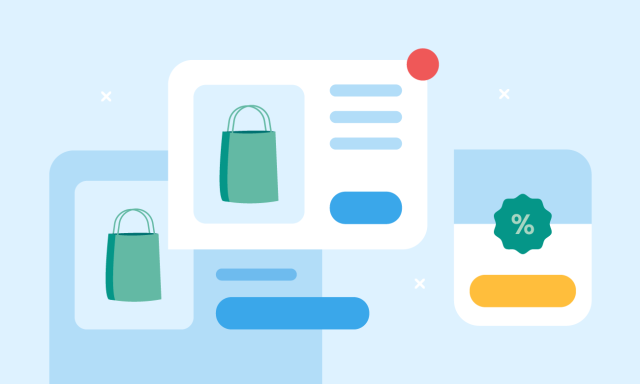In this article:
- What is mobile customer engagement, and why is it important?
- 1. Make “mobile-first” your mantra
- 2. Supercharge your mobile marketing
- 3. Create or prioritize a mobile loyalty program
- 4. Use omnichannel support to help customers
- 5. Put conversations at the forefront
- 6. Make it personal
- 7. Ask permission and make opting out easy
- 8. Be available on the channels your customers use
- 9. Give people a reason to sign up
- 10. Build a strategy and customer persona profiles
- 11. Keep people interested with gamification
- 12. Put data to real use with location-based content
Think about the last few times you used your phone to interact with a business. If you had a positive experience, why was that? Did the business understand what you needed and provide you with a fast and easy way to get it? That’s mobile customer engagement in a nutshell.
As phones become a bigger part of how we interact with the world, businesses need to connect with their customers in meaningful ways. With the variety of mobile platforms out there, this is more important than ever.
Here’s a good example of what we’re talking about: 90% of customers want to reply in-message to ask questions when they’re talking to a company.
Keep reading to learn strategies for engaging customers in a mobile-first world.
What is mobile customer engagement, and why is it important?
Mobile customer engagement is how companies use messaging channels and apps to interact with their customers. As the number of users continues to grow (some estimates suggest that there will be as many as 7.5 billion mobile users by 2025), so does the need for businesses to be ready to serve their customers on those channels.
As customers increase their use of mobile channels, they'll want to handle everything through those channels, too. This paves the way for you to separate yourself from the competition. Make your company an accessible, stress-free alternative to grow your market share and improve loyalty.
1. Make “mobile-first” your mantra
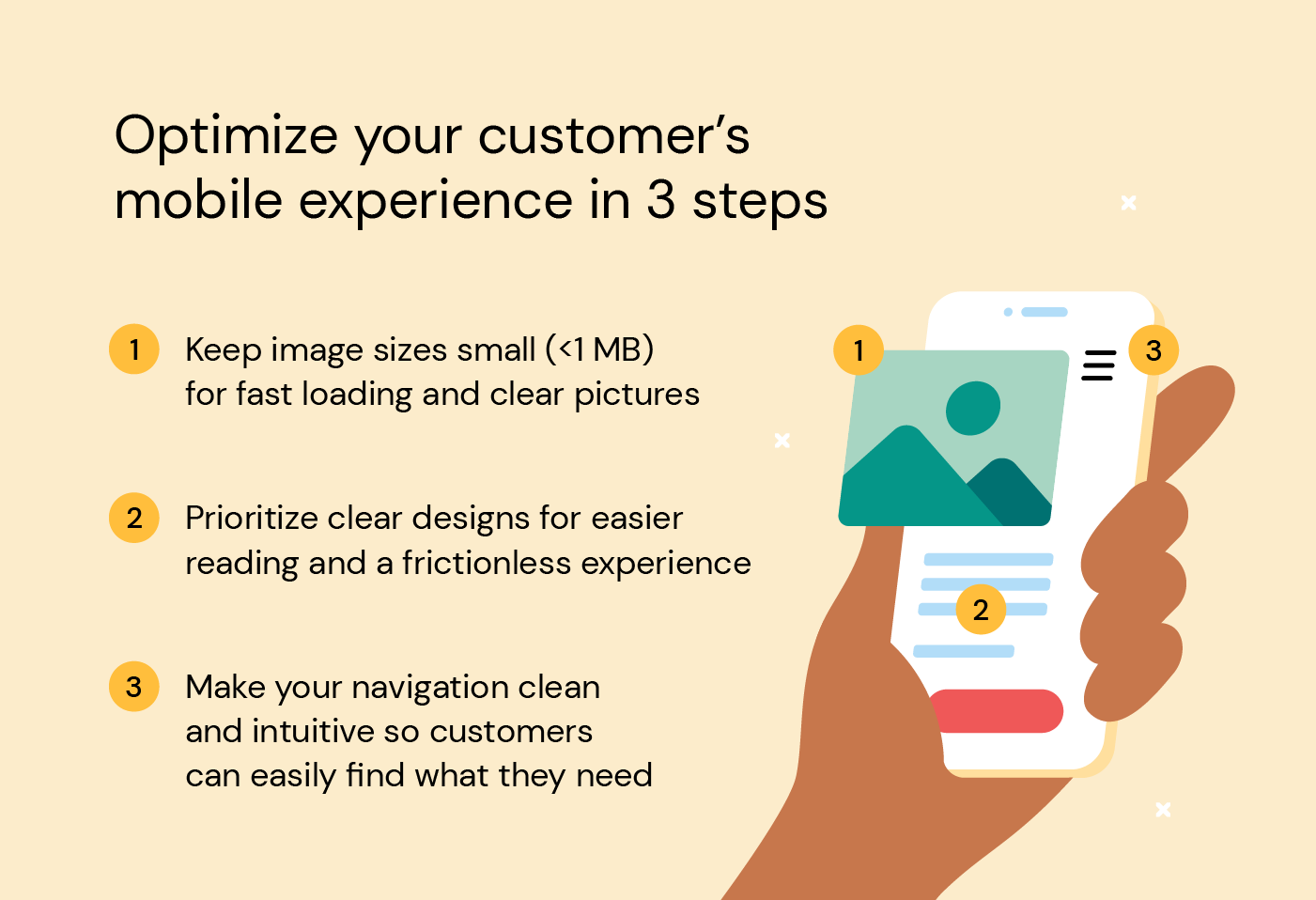
One of the most critical steps to keep your customers engaged on mobile is prioritizing your mobile presence.
Being mobile-friendly means making sure everything connected to your brand is mobile-friendly. That means your website, social media presence, and emails.
A couple of key factors to consider optimizing include:
- Reducing image sizes: You want your pages and app to load quickly and look good.
- Keeping the design simple: Highlight what’s essential and leave the frills out of it.
- Making navigation simple and intuitive: The easier it is for your customers to get where they want to go, the more likely they are to use your app or visit your site. Don’t clog your mobile site up with too many navigation bars or sub-folders within navigation bars.
Think about options only available on mobile devices like SMS and RCS messages. If you’re already using these, make sure the pages you link to are set up for mobile viewing.
2. Supercharge your mobile marketing
Knowing where your customers are is a crucial part of knowing who they are. In the world of mobile marketing, reaching customers on the channels they use is one of the best ways to engage with them.
Omnichannel capabilities can help your company serve as many people as possible. This is especially important if you’re working with multiple target markets that prefer different channels. If your company has a global reach, you’ll likely have to target customers on many popular channels worldwide.
Creating assets designed for mobile devices can help boost open and conversion rates. Personalized pages, SMS, and even videos further improve engagement. The right software can help create and manage these campaigns while providing in-depth analytics.
3. Create or prioritize a mobile loyalty program
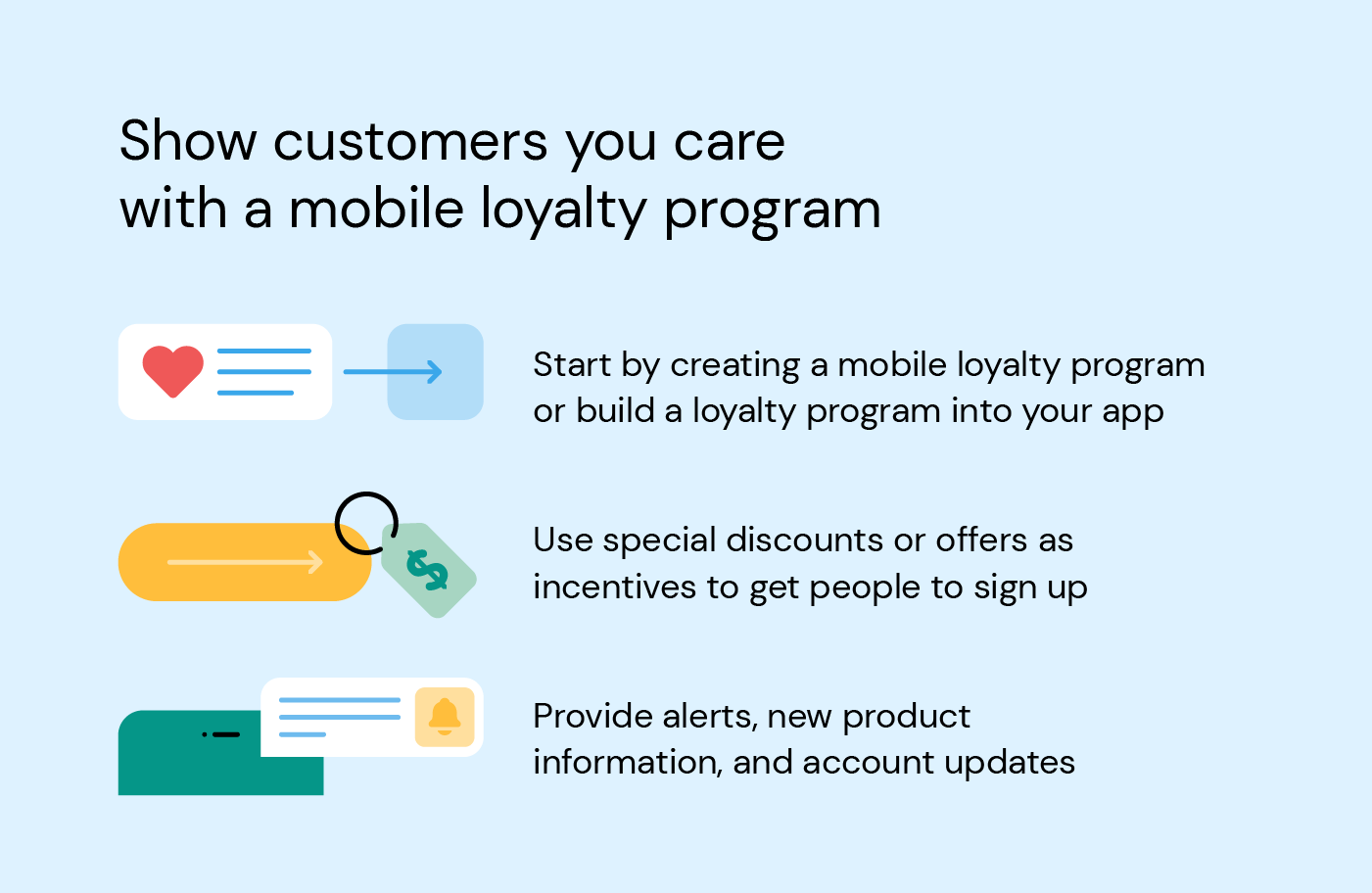
History shows that loyalty programs improve open rates and customer loyalty. A mobile version makes people much more likely to sign up if it offers something customers actually want.
There are lots of ways to make a loyalty program for your customers. Provide discounts, rewards on purchases, and exclusive offers for tried-and-true methods of getting buy-in. If you already have a loyalty program, create a mobile-optimized version so your customers can see that it was built for use on mobile devices.
4. Use omnichannel support to help customers
Crossing channels to help your customers is vital, as people now use more platforms than ever. An omnichannel customer service system lets them pick up right where they left off without having to repeat themselves or start over. By combining the latest chatbot technology with live support, customers can always get help when they need it.
5. Put conversations at the forefront
Make communication two-way wherever possible. As personalization becomes the new normal, people expect this level of service. In retail, conversational commerce helps to improve retention by helping customers. This can take the form of support for a product or order, and it also means being able to provide them with options that fit their profiles.
Conversational banking is when your business uses two-way communication for account support and new product offerings. If you can provide a higher level of customer support, you’ll be able to reduce churn and see a better ROI on your marketing efforts.
Modern two-way communication can be a combination of chatbots and live agent support. Optimizing your system to seamlessly hand support and sales conversations to the right agents at the right time will build better relationships.
6. Make it personal
Personalization is non-negotiable for many modern consumers, so use it to your advantage. Be the company that knows them better than your competitors. Personalization gives you the chance to be particularly creative.
For example, when Telekom Deutschland wanted to promote a new program – “We Care” – where their customers could trade in their phones for a new phone. It worked with Sinch for Marketing to create personalized SMS messages and videos. These videos used customer info, including device type and the customer’s name to create unique offers. The campaign targeted younger customers who are resistant to traditional avenues.
The deep level of personalization was very successful. Telekom Deutschland saw open and watch rates of almost 50% and a conversion rate double that of a regular SMS campaign.
7. Ask permission and make opting out easy
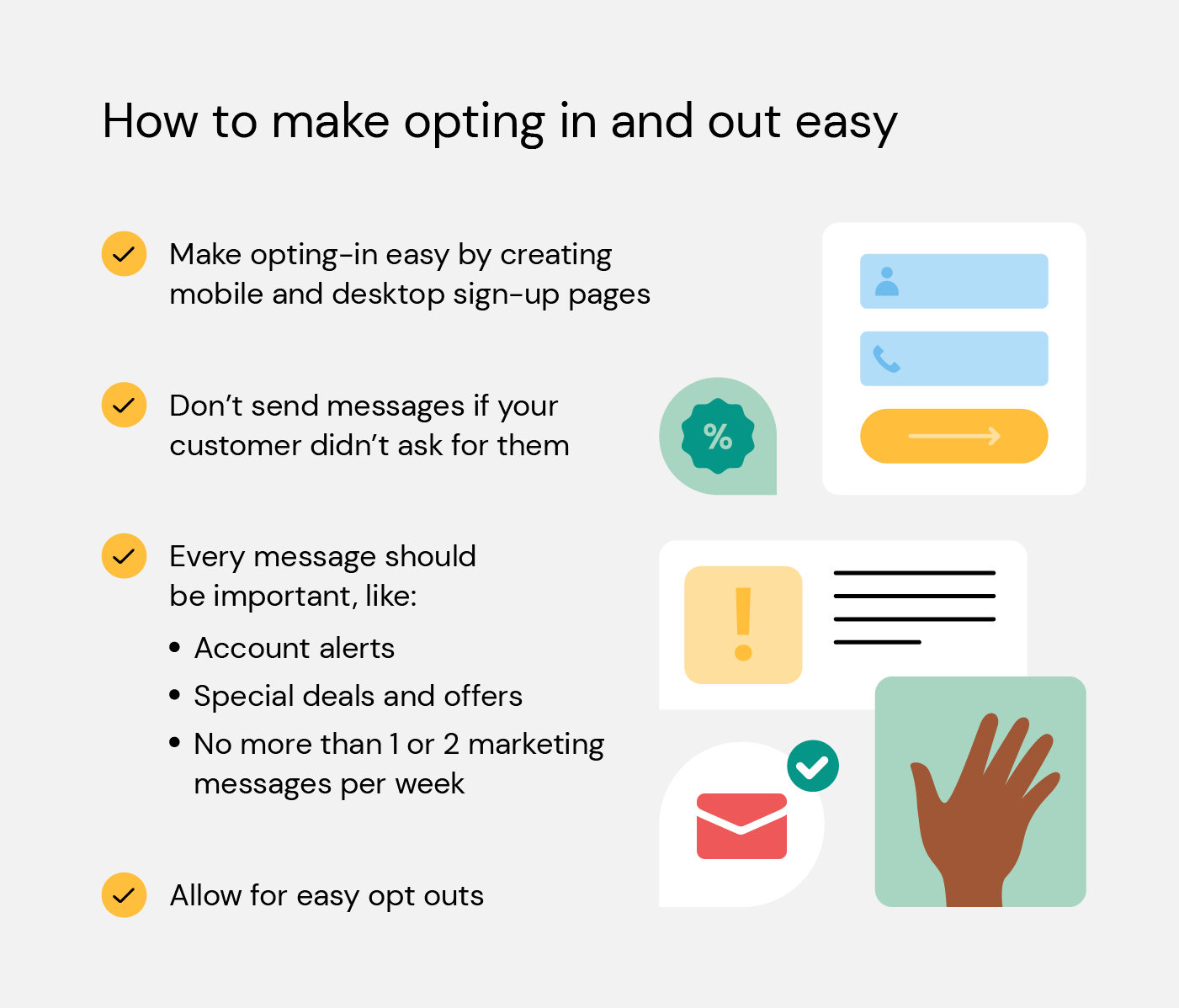
Trust is the bedrock of any good relationship, including relationships with your customers. Getting permission to send messages is a good way to show that you value their privacy (and for some channels, an opt-in is required). Depending on where you or your customers are, permission (as well as the ability to opt out) may also be required by law.
Remember, when people sign up for mobile notifications, they are letting you into their phone – the most personal piece of tech they have. If you remember to treat that decision respectfully, they’re more likely to stay signed up. One great way to keep them onboard is to make sure every message you send is valuable or will somehow help their experience.
8. Be available on the channels your customers use
Not every company needs to use every channel, but if you know your customers are using one that you aren’t on, fix that ASAP. By using their preferred channels and platforms, you’re showing them you’re listening. It might seem daunting to manage multiple channels, but Sinch’s Conversation API makes it so you can manage your messaging channels and provide an omnichannel experience with a single, unified API.
Conversation API lets you send one-way messages and have two-way conversations with your customers on several channels. You can also scale up easily by adding new channels as needed.
9. Give people a reason to sign up
People are bombarded with messaging and marketing all the time. If you want to stand out, you have to provide that little bit extra to show you’re committed to earning customer trust.
If you’re in retail, provide your customers with exclusive offers. Try discounts or deals they can only get when they sign up for SMS, a mobile loyalty program, or email updates.
For banks, try account alerts, fraud detection, and information about new products are incentives. Use these to secure mobile communication opt-ins.
10. Build a strategy and customer persona profiles
Like any initiative, testing ideas before pushing them out is essential. Developing a mobile customer engagement strategy will show you the strengths and weaknesses of your system. Don't forget to create alternative strategies so you can A/B test them.
Your customer profiles are as important as your strategy. Build customer personas based on knowledge and develop them as you learn more. Not sure how to start? Surveys and rating systems can offer valuable feedback and teach you a lot. Plus, they show your customers you care about their opinions and experiences with your company.
A solid strategy and great profiles put your commitment to keeping your messaging relevant right up front. One of the best indicators of continued buy-in from your customers is a low opt-out rate. Decrease churn by providing only relevant information.
11. Keep people interested with gamification
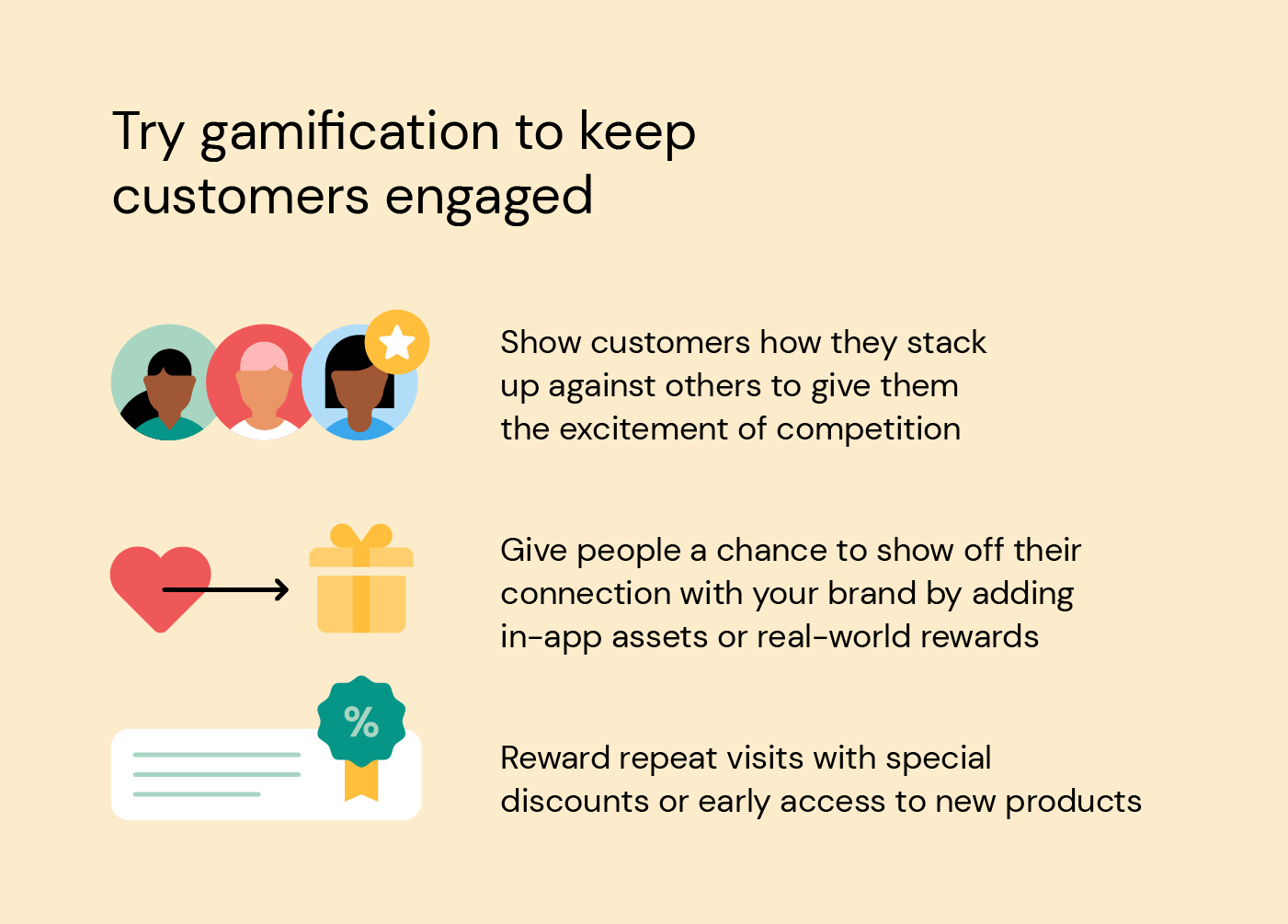
Gamification means using mechanisms found in games in a non-game environment. Adding gamification to your app or messaging opens up tons of opportunities for better engagement. It encourages people to keep using or return to an app if there’s a reward attached to it. That reward can be as simple as earning something in the app (an exclusive theme color or badge) or being able to compete with others.
12. Put data to real use with location-based content
Mobile customer engagement solutions work best when you use data collected to its full advantage. If your company has an app, you can deeply understand how and where your customers engage with you.
A great mobile customer engagement platform lets you create content that talks to customers based on where they are. Building location-specific content means you’re communicating in ways that are best for a particular region. And it allows you to push marketing messages to clients when they're nearby. If you’re ready to make mobile engagement a priority, Sinch can help. From omnichannel support and highly customizable and scalable chatbots to messaging API integrations, we can provide you with the tools you need. Get in touch with us today.
